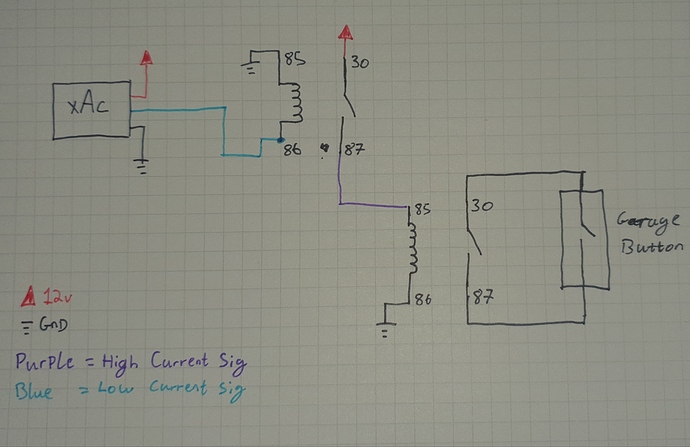Right the 12v output of the xAC isn’t particularly useful to use, you drive the first relay using that to drive a higher power relay.
I personally though that the reason for 2 was to not put too much load on the output of the xAC.
Both of the circuits I’ve drawn are functionally identical.

